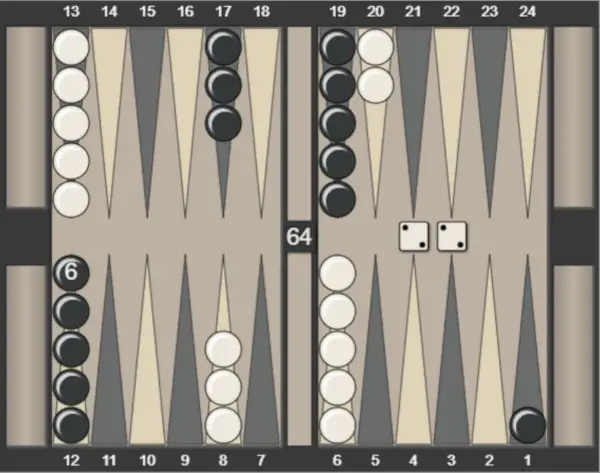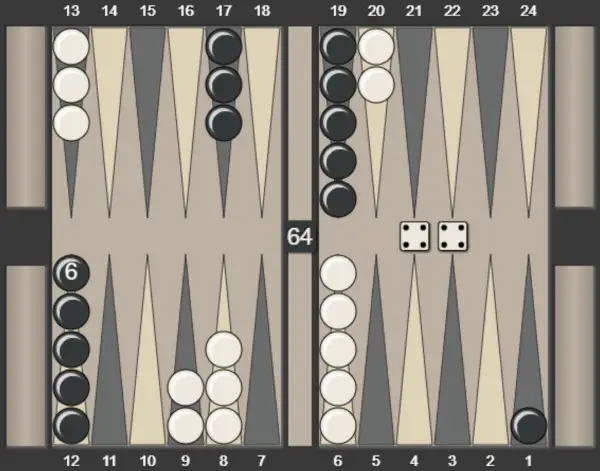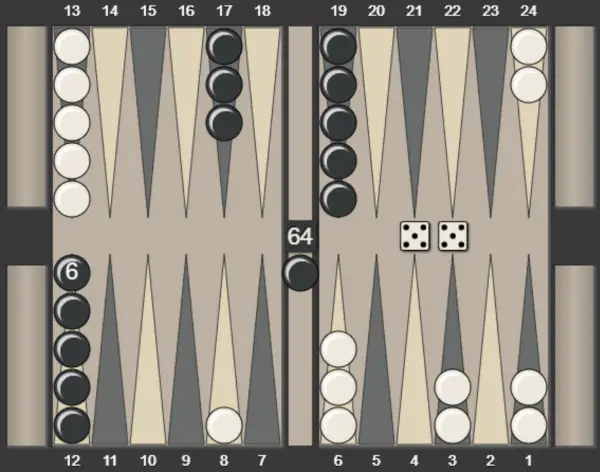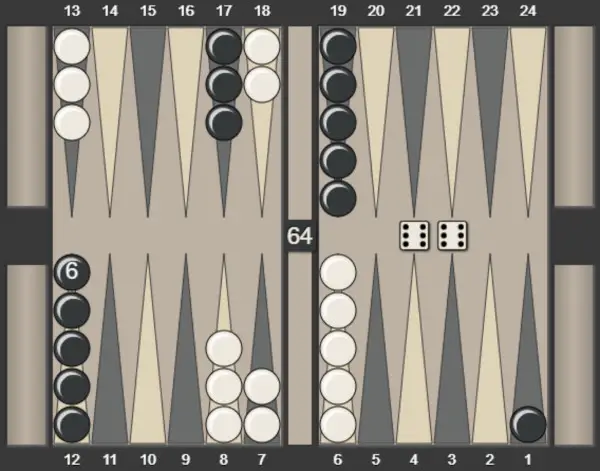Doubles in backgammon, when both dice show the same number, are a unique and powerful aspect of the game. They provide an opportunity to move your checkers quickly and strategically, but they also require careful planning to make the most of them. In this article, we’ll explore the intricacies of playing doubles in backgammon and how to use them to your advantage.
Understanding Doubles
Doubles are rolled fairly infrequently, occurring on average six out of every 36 rolls of the dice. When you roll doubles, you have four identical numbers to work with. For example, if you roll double 3s, you have four 3s to move your checkers. This allows for a range of options, but it also presents challenges in deciding how best to use them.
What is the best way to play each double at the start of a game of backgammon when responding to your opponent’s opening move?
Here are some quick links to the 6 possible double rolls in backgammon and what the corresponding best moves are:
Each of the following moves assume your opponent rolled 6-5 and used their opening move to split their back checkers and make a run one with one of them from their 24-point to their 13-point. Obviously, alternative moves may be needed to adapt to your opponent’s first roll.
What is the best move with 1-1 in backgammon?
The best move here is to secure your bar-point (8/7 [2]) and your 5-point (6/5 [2]). Although this leaves a blot on your 8-point which is open to an indirect hit, making a three prime is worth the risk, especially as it should be relatively easy to re-enter on your opponents home board if your blot is hit:

Click to go back to doubles table
What is the best move with 2-2 in backgammon?
Secure your opponent’s golden (five) point (24/20 [2]). Strategically, this is the most important point in backgammon:

Click to go back to doubles table
What is the best move with 3-3 in backgammon?
Secure your golden (five) point (8/5 [2]) as well as your 21-point (24/21 [2]). This move creates opportunities on both sides of the board:

Click to go back to doubles table
What is the best move with 4-4 in backgammon?
Secure your opponent’s golden (five) point (24/20 [2]) as well as advancing checkers in your outer board on your 9-point (13/9 [2]). This steals the most important point in backgammon at one end of the board, and creates another soft-landing in your outer board as you start to bring builders down to trap your opponent’s remaining back checker:

Click to go back to doubles table
What is the best move with 5-5 in backgammon?
The best move here is to secure your 3-point (8/3 [2]) and your 1-point (6/1 [2]), whilst simultaneously hitting your opponent’s blot and making it more difficult for them to re-enter:

If your opponent didn’t split their back checkers, your best option is to move two checkers down from your mid-point to your 3-point.

Click to go back to doubles table
What is the best move with 6-6 in backgammon?
This is obviously the best double to roll as it frees your back checkers (24/18 [2]) and makes your bar-point (13/7 [2]).

Click to go back to doubles table
Conclusion
Playing doubles in backgammon requires a combination of strategic thinking and adaptability. While they provide opportunities to make bold moves and gain an advantage, they can also lead to mistakes if not used wisely. As with all aspects of backgammon, practice and experience are key to mastering the use of doubles effectively.
Ultimately, the best approach when playing doubles in backgammon depends on the specific game situation, the position of your checkers, and your overall game plan. By understanding the various options available and practicing with doubles, you can become a more skilled and versatile backgammon player.
* Backgammon board images created with bgLog


